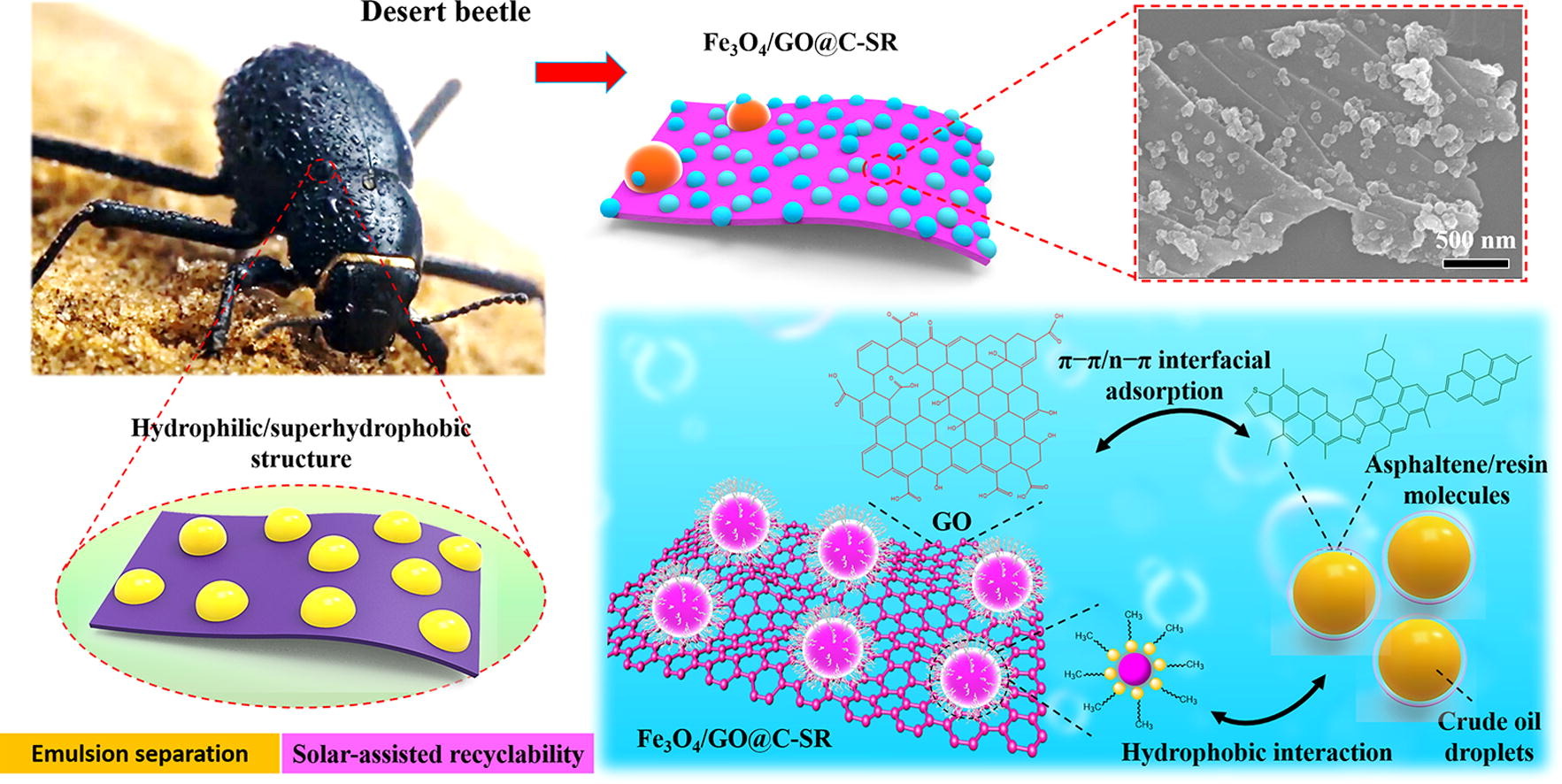Prof. ZENG Zhixiang’s team at the Ningbo Institute of Materials Technology and Engineering (NIMTE) of Chinese Academy of Sciences (CAS) developed a novel magnetic demulsifier with desert beetle-inspired microstructures, realizing high-efficiency oil-in-water emulsion separation with low recovery energy consumption. The study was published in Chemical Engineering Journal.
In recent years, oily wastewater discharge and marine oil spills have led to certain oily water pollution, posing great threats to the global marine ecosystem and human health. However, existing materials for oily wastewater treatment, especially superwetting particles, exhibited inferior separation efficiency and high recovery energy consumption, thus seriously limiting their practical application in oil-in-water emulsion separation.
Inspired reversely by the hydrophilic/superhydrophobic structure on the Stenocara beetle’s back for water collection and water retention, researchers at NIMTE fabricated a magnetic graphene oxide-based composite (Fe3O4/GO@C-SR) with desert beetle-like microstructure, which consists of underwater superoleophobic underlayer and superhydrophobic/superoleophilic bumps.
By virtue of a facile one-step solvothermal method, the magnetically active graphene oxide (Fe3O4/GO) particles were synthesized. Then the superhydrophobic/superoleophilic carbon black particles (C-SR) were assembled on the surface of Fe3O4/GO particles to construct a beetle-like structure via a ball milling technique.
The synthesized Fe3O4/GO@C-SR demulsifier showed high hydrophobicity/oleophilicity in air and high oleophobicity under water. The superoleophilic bumps, i.e., C-SR, can capture and aggregate tiny oil droplets, and the hydration layer formed in the hydrophilic region can effectively prevent the captured oil droplets from spreading on the composite structure, thus enhancing the oil-in-water emulsion separation efficiency.
In addition, compared with traditional magnetic GO demulsifiers, the synthesized magnetic Fe3O4/GO@C-SR demulsifier showed higher photothermal conversion efficiency and superior recyclability, thus reducing the energy consumption of the demulsifier in the recovery process.
This work may provide a promising idea for the design and fabrication of advanced and energy-saving materials in the field of efficient oily wastewater treatment.
The research was supported by the National Natural Science Foundation of China (Nos. U1809214, U1809213, 51703235) and Open Project of Key Laboratory of Marine Materials and Related Technologies (No. 2019 K04).

Fig. Desert beetle-inspired Fe3O4/GO@C-SR demulsifier (Image by NIMTE)
Contact
WANG Gang
Ningbo Institute of Materials Technology and Engineering
E-mail: wanggang@nimte.ac.cn

